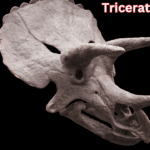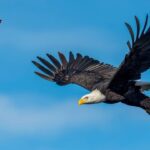Introduction Eagle
Eagle is a symbol of power, freedom, and resilience, respected across societies and history. Known for their acute sight, superb flight, and savage ability, birds have enamored human creative mind for quite a long time. These raptors are basic to different environments, controlling prey populaces and keeping up with biological equilibrium. Past nature, hawks hold huge social and representative worth, showing up in public images, fantasies, and legends around the world, exhibiting their persevering through importance and widespread allure.

Eagle as a Bird
Hawk as a bird encapsulates strength, beauty, and sharp impulses, making it perhaps of the most imposing hunter in the avian world. With a wingspan that orders the skies and extraordinary vision, birds succeed in hunting and endurance. Found across assorted living spaces, these raptors represent opportunity and strength. From the bald eagle of North America to the brilliant hawk of Eurasia, their presence advances environments while rousing social and representative importance around the world.
Physical Characteristics
Falcons are prestigious for their amazing wingspan, which can go from six to eight feet relying upon the species, empowering them to take off easily across tremendous distances. Their strong bodies and wide wings give the strength expected to quick and light-footed flight, a urgent element for hunting and dodging hunters. These transformations make hawks incomparable airborne trackers.
A main trait of hawks is their razor-sharp talons, intended to get a handle on and immobilize prey with accuracy. Their snared noses are similarly considerable, fit for tearing through extreme tissue, making them dominant hunters in their natural surroundings. Such actual traits are fundamental for endurance and strength.
Falcons have phenomenal vision, up to multiple times more keen than that of people. This sharp vision permits them to recognize prey from incredible levels, even while skimming. Their vision is imperative for their hunting ability and flexibility in different conditions.
The plumage of falcons is both viable and striking, with feathers that differ in variety from brilliant browns to immaculate whites. This gives both disguise and protection, guaranteeing endurance in outrageous environments. Species like the bald eagle show one of a kind variety designs, adding to their famous appearance.
Their size and construct fluctuate altogether across species, for certain falcons, similar to the wench bird, showing vigorous edges, while others are more smoothed out. These varieties mirror their flexibility to explicit environments, featuring their transformative achievement and natural significance.
Habitat and Distribution
Birds occupy different environments, going from thick woods to open prairies and rough mountains. Their flexibility permits them to flourish in different environments, from tropical rainforests to bone-dry deserts. This adaptability highlights their job as dominant hunters across numerous biomes.
Raptors, like the bald eagle, are firmly connected with amphibian conditions, including streams, lakes, and beach front districts Raptors like the bald eagle are firmly connected with sea-going conditions like streams, lakes, and waterfront districts. These territories give more than adequate admittance to fish, an essential food source. Also, brilliant birds incline toward open landscape like fields and tundras, which support their hunting style.
Birds are appropriated across each landmass with the exception of Antarctica, exhibiting their worldwide natural significance. Districts like North America, Europe, and Asia have assorted falcon species adjusted to remarkable natural difficulties. Every species adds to its neighborhood environment’s equilibrium.
Relocation designs differ among birds, for certain species going significant distances to keep away from unforgiving winters. These movements stress their reliance on good living spaces and occasional prey accessibility.
Urbanization and deforestation undermine hawk living spaces around the world, disturbing their appropriation and endurance. Preservation endeavors plan to safeguard these conditions, guaranteeing that hawks keep on rising above regular scenes for a long time into the future. Their presence stays an essential sign of environment wellbeing worldwide.
Behavior and Hunting of Hawks
Hawks show wonderful behavior that consolidates insight, flexibility, and sense. They are fundamentally singular birds, albeit a few animal groups structure matches during reproducing seasons. Besides, their regional nature guarantees they approach adequate prey and settling locales.
With regards to hunting, birds are exceptionally key. Their sharp vision permits them to detect prey from extraordinary levels, and they jump with amazing velocity and accuracy. Also, their strong claws are utilized to get a handle on and immobilize prey, making them proficient hunters.
Various types of hawks have novel hunting styles. For example, the bald eagle basically benefits from fish, frequently grabbing them from the water’s surface. On the other hand, brilliant falcons chase warm blooded creatures like bunnies and, surprisingly, bigger prey, for example, deer grovels. This variety in diet features their flexibility.
Strangely, birds frequently rummage whenever potential open doors emerge, particularly during food shortage. This sharp way of behaving guarantees endurance in testing conditions. In this way, their job as both hunter and scrounger is crucial to biological systems.
All in all, the hunting behaviors of hawks feature their strength in the avian world. Their versatility, sharp impulses, and natural jobs underline their significance in keeping up with balance inside their territories. Thusly, these raptors stay notorious images of force and flexibility.
Hawk in Symbolism and Culture
The eagle has for some time been a strong image in societies around the world, addressing strength, opportunity, and boldness. From the Roman Realm to Local American practices, hawks are respected as couriers of the heavenly and defenders. In present day times, the bald eagle fills in as a public token of the US, meaning freedom and strength. This superb bird keeps on moving fantasies, workmanship, and old stories, typifying immortal qualities across ages.
Historical Significance
Since the beginning of time, eagles have represented power and authority, frequently embraced by realms to convey strength. For example, the Roman Realm unmistakably highlighted the bird on its pennants, addressing triumph and power. Essentially, in old Egypt, the falcon was related with the sun god Ra, implying heavenly power.
In the Medieval times, falcons kept on holding emblematic weight. Governments and honorable families integrated falcon themes into their escutcheons, featuring their solidarity and flexibility. For instance, the twofold headed bird turned into an unmistakable image of the Byzantine and Blessed Roman Realms, underlining solidarity and control.
Over the long haul, the falcon’s importance rose above lines and societies. Local American clans respected birds as sacrosanct creatures, accepting they conveyed petitions to the sky. Moreover, quills of hawks were in many cases utilized in profound services, representing boldness and association with the heavenly.
In present day history, falcons have been taken on as public images. The bald eagle, for example, addresses opportunity and autonomy in the US. In the mean time, different nations, for example, Poland and Germany, highlight falcons in their heraldry to reflect strength and pride.
Consequently, the hawk’s historical significance perseveres across civilizations and times. Its presence in social and public character features the widespread allure of this magnificent bird as an image of force, solidarity, and greatness.
Modern Representation
In present day times, eagles are broadly perceived as images of solidarity, opportunity, and strength. For instance, the bald eagle has turned into a getting through image of the US, showing up on true seals, money, and military symbols. This mirrors its profound association with public personality and freedom.
Besides, hawks are frequently connected with initiative and vision. Enterprises and associations use hawk symbolism in logos and marking to convey characteristics like aspiration and power. Similarly, sports groups take on falcon mascots to address speed, predominance, and serious soul.
Moreover, hawks keep a critical job in worldwide heraldry. Numerous nations, including Poland, Germany, and Mexico, highlight birds on their banners or ensigns, representing solidarity and power. This exhibits their proceeded with importance in addressing public pride.
In workmanship and writing, hawks are depicted as magnificent and honorable animals. From compositions to verse, they motivate imagination and act as similitudes for amazing quality and assurance. Subsequently, their impact stretches out past imagery into social articulation.
All in all, the modern representation of falcons features their persevering through heritage. As a general image of significance and opportunity, falcons proceed to motivate and join individuals across countries, businesses, and inventive disciplines.
Mythology and Folklore
In different societies, eagles have been adored as heavenly or magical animals. In Greek folklore, Zeus, the lord of the divine beings, was frequently portrayed with a bird, representing his power and authority. Likewise, the hawk’s relationship with the sky and sun interfaces it to divine creatures across numerous old practices.
In Norse folklore, the falcon was an image of the god Odin, addressing shrewdness and the quest for information. Falcons were accepted to convey messages among divine beings and people, typifying both strength and knowledge. In this way, these birds held a focal job in conveying heavenly will.
Moreover, in Local American folklore, birds are many times seen as profound couriers. They are accepted to can speak with the Maker and convey supplications to the sky. This consecrated job made them profoundly regarded among numerous clans.
Furthermore, in numerous European legends, the hawk is an image of boldness and honorability. Stories frequently portray falcons as defenders, looking after realms and directing legends in their missions. This depiction mirrors their regarded status in social customs.
Taking everything into account, the mythological and folkloric meaning of birds rises above societies, representing power, astuteness, and profound association. These lofty animals keep on rousing wonder and reverence through their parts in antiquated stories and present day convictions.

Hawk as a Space Symbol (Apollo 11 Lunar Module)
The eagle holds an exceptional spot in space history as the image of the Apollo 11 Lunar Module. Named “Hawk,” it denoted humankind’s most memorable arriving on the Moon. Neil Armstrong’s well known words, “The Bird has landed,” connote a groundbreaking accomplishment in space investigation. This image of strength and freedom keeps on motivating, reflecting both the victory of science and the getting through human soul to investigate the unexplored world.
Overview of the Apollo 11 Mission
The Apollo 11 mission was a memorable spaceflight, denoting whenever people first arrived on the Moon. Sent off on July 16, 1969, by NASA, it conveyed space travelers Neil Armstrong, Buzz Aldrin, and Michael Collins. This mission was the climax of long periods of room investigation endeavors.
After arriving at the Moon, Armstrong and Aldrin plunged in the Lunar Module, named “Falcon.” In the mean time, Collins stayed in circle on board the Order Module. The Eagle arrived on July 20, 1969, and Armstrong broadly pronounced, “That is one little step for [a] man, one monster jump for humankind.”
The mission’s prosperity exhibited the technological progressions and commitment of the space program. Also, it caught the creative mind of millions around the world, joining individuals in wonderment of human accomplishment. This achievement satisfied President John F. Kennedy’s vision of handling a man on the Moon before the ten years’ end.
Following the memorable handling, the space travelers went through around two hours investigating the lunar surface. They gathered examples, took photos, and directed tests.
All in all, Apollo 11 remaining parts quite possibly of the best accomplishment in space investigation. Its prosperity established the groundwork for future lunar missions, extending’s comprehension humankind might interpret space.
The Hawk Lunar Module
The Eagle Lunar Module assumed an essential part in Apollo 11’s prosperity. It was intended to arrive on the Moon’s surface and securely return the space explorers to the Order Module. The module was lightweight at this point solid, worked to endure the brutal states of room.
The Eagle’s plunge to the Moon was a noteworthy second. Armstrong and Aldrin directed the module, exploring it to an effective arriving in the Ocean of Serenity. As they landed, Armstrong’s famous words, “The Hawk has landed,” resounded across the world.
Inside the module, the space explorers had restricted space, however the gear was painstakingly set up for effectiveness. The Lunar Module’s plan considered a consistent change from arriving to investigation. Changing from the Lunar Module to the lunar surface was really difficult for the space explorers.
Subsequent to investigating the Moon, the space explorers got back to the Eagle for their process home. The Lunar Module’s climb stage moved them back to the circling Order Module.
All in all, the Eagle Lunar Module was fundamental to the outcome of Apollo 11. Its plan and execution displayed the accomplishments of room investigation, preparing for future lunar missions.
Legacy
The Eagle Lunar Module assumed an essential part in Apollo 11’s prosperity. It was intended to arrive on the Moon’s surface and securely return the space explorers to the Order Module. The module was lightweight at this point solid, worked to endure the brutal states of room.
The Eagle’s plunge to the Moon was a noteworthy second. Armstrong and Aldrin directed the module, exploring it to an effective arriving in the Ocean of Serenity. As they landed, Armstrong’s famous words, “The Hawk has landed,” resounded across the world.
Inside the module, the space explorers had restricted space, however the gear was painstakingly set up for effectiveness. The Lunar Module’s plan considered a consistent change from arriving to investigation. Changing from the Lunar Module to the lunar surface was really difficult for the space explorers.
Subsequent to investigating the Moon, the space explorers got back to the Eagle for their process home. The Lunar Module’s climb stage moved them back to the circling Order Module.
All in all, the Eagle Lunar Module was fundamental to the outcome of Apollo 11. Its plan and execution displayed the accomplishments of room investigation, preparing for future lunar missions.
Conservation of Eagles
The conservation of eagles is basic to safeguarding biodiversity and keeping up with environment balance. Because of environment misfortune, contamination, and hunting, many hawk species face declining populaces. Conservation efforts center around safeguarding territories, upholding lawful assurances, and advancing mindfulness. Furthermore, restoration programs assist harmed falcons with getting back to nature. These activities are fundamental for guaranteeing that people in the future can keep on seeing these superb birds in their regular habitats.
Threats to Survival
Birds face various dangers to their endurance, essentially from habitat loss. Urbanization and deforestation are quickly lessening the accessible space for settling and hunting. As backwoods and wetlands are cleared, birds battle to track down reasonable conditions.
Notwithstanding natural surroundings misfortune, pollution represents a critical gamble. Synthetics like pesticides and weighty metals aggregate in the climate, influencing falcons’ wellbeing. These contaminations debilitate their insusceptible frameworks and might prompt demise.
Another significant danger is illegal hunting. Poaching and the obliteration of eggs keep on jeopardizing falcon populaces. Albeit numerous nations have regulations safeguarding birds, criminal operations actually persevere, compromising their endurance.
Besides, environmental change is adjusting biological systems, influencing the accessibility of prey. As prey species move or decline because of changing atmospheric conditions, birds are compelled to adjust or confront starvation.
All in all, falcons’ endurance is risked by a blend of human exercises and ecological changes. Preservation endeavors should zero in on addressing these dangers to guarantee their proceeded with presence in nature.
Conservation Efforts
Preservation efforts for birds have turned into a need overall because of their declining populaces. Various associations are committed to safeguarding bird environments, zeroing in on safeguarding woods, wetlands, and open grounds. Therefore, these endeavors guarantee birds have a protected climate to home and chase.
Notwithstanding environment assurance, legal protections have been carried out. Regulations against poaching and hunting have decreased the unlawful killing of birds. These guidelines are pivotal in keeping up with stable hawk populaces across different locales.
Besides, rehabilitation programs assume an essential part in bird preservation. Harmed or stranded hawks are dealt with and delivered once again into nature. Such projects have seen extraordinary progress in reestablishing wellbeing to harmed birds, permitting them to flourish in their common habitats.
Local area commitment is additionally fundamental for protection. Bringing issues to light about the significance of falcons energizes nearby help for living space security. Subsequently, individuals become more proactive in guaranteeing the endurance of these grand birds.
All in all, eagle conservation keeps on advancing, zeroing in on living space assurance, lawful authorization, and local area association. With progressing endeavors, we can expect to get a future for these notable birds.
Conclusion
In conclusion, The Glorious Eagle remains as an image of solidarity, opportunity, and effortlessness. Its unmatched hunting abilities, taking off flights, and acute sight make it quite possibly of nature’s most enthralling hunter. Past its actual ability, the hawk holds social and biological importance, motivating wonderment and veneration around the world. By getting it and safeguarding this amazing bird, we honor the multifaceted equilibrium of nature and guarantee its inheritance for people in the future.








